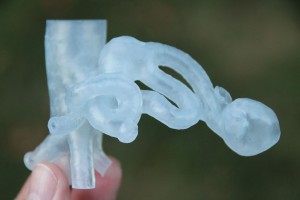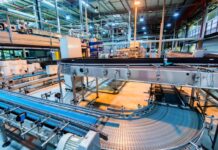Dr Michael Itagaki from the Department of Interventional Radiology at the Swedish Medical Centre in Seattle, Washington, turned to 3D printing to save a patient from having to have her spleen removed.

The spleen is one of our most valuable organs; it recycles red blood cells, stores white blood cells, it fights bacteria and is known as our own personal blood filter.
Dr Itagaki’s patient was experiencing multiple splenic artery aneurisms; in such cases, in order to remove the aneurism, a doctor has to remove the whole spleen. Dr Itagaki had to find an alternative to the available and already known treatments and procedures to the condition since his patient didn’t want to have her spleen removed.
“My patient was a very intelligent and determined individual. I explained both options to her in detail, but she would not accept either of the conventional treatments. She did not want to lose her spleen and be at increased risk of future infections. She challenged me to find a way to treat her aneurysms while saving her spleen,” the doctor wrote in his blog.
“Everybody said the spleen couldn’t be saved. It was “impossible.” She either had to have her spleen removed or her splenic artery embolised. Do nothing and it was just a matter of time until an aneurysm ruptured, probably killing her. I was greatly moved by my patient’s doggedness. She wasn’t willing to accept the limits of conventional medical treatment, so I didn’t think I should either. I kept searching for solutions.”
After extensive research, he turned to 3D printing to create the detailed 3D printed splenic artery model he needed to save his patient’s spleen.
Thanks to a combination of the software packages Osirix and Blender, the doctor designed a detailed anatomic model from his patient’s CT scan and then used the low-cost online 3D printing services Shapeways and iMaterialise to print his models – precise full-scale replicas of the patient’s splenic artery.
“I contacted representatives from the companies that manufactured the brain aneurysm equipment. They had never heard of anybody testing their equipment in a 3D printed model before, but enthusiastically supported it. They donated real guidewires, catheters, stents, and coils for use in testing. Several came over to my house and we replicated the entire procedure inside the 3D model,” the Doctor said.
After overcoming all red-tape procedures, Dr Itagaki performed the surgery and saved his patient’s spleen. The success of the revolutionary procedure inspired him to start his own website Embodi3D, for those who want to use 3D printing for biomedical science purposes.
“This experience fundamentally changed my perception about the value of 3D printing in medicine. For safe, easy, and routine medical procedures, 3D printing will probably not have much of an impact in the foreseeable future. It’s too time consuming and costly to make 3D printed models. For complicated or high risk procedures, however, it can be invaluable,” said Dr Itagaki.



















